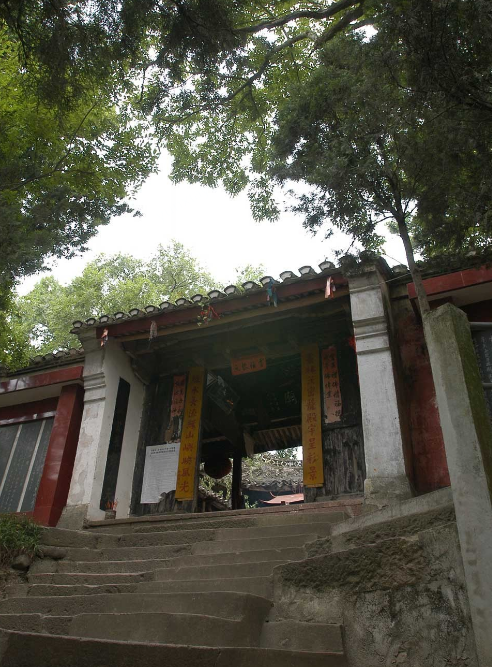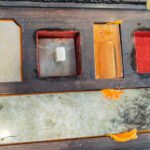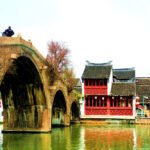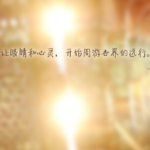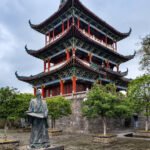There is an isolated hill 0.8 kilometers southeast of Shuiche in Ninghai called Jingshan. On the top of it, there is a temple named Jingshan Temple. Jingshan Temple was originally built in 1328 (the Wuchen year of Zhihe period in the Yuan Dynasty) by the Ge family of Quanshui, Ninghai. In 1661 (the Xinchou year of Shunzhi period), in order to cut off the provisions of Zheng Chenggong, the Qing government issued an order to relocate people near the sea. People moved inland and temples were destroyed. In 1670 (the Gengxu year of Kangxi period), villagers returned to their hometowns. The Ge family and the four surnames of Chen, Pan, and Xie rebuilt this temple. The existing layout of Jingshan Temple is in the style of the early Qing Dynasty, but a few components are relics from the Yuan and Ming Dynasties. The temple faces south. It has a single-eaved hip roof and a construction area of 180 square meters. Jingshan Temple is small and exquisite. Especially the main hall is jointly built with stone and wood. The caisson is rough and is in the form of stacked steps of the Eight Diagrams. The architectural style of the main hall of this temple is unique in Ninghai County and provides a special example for studying temple architecture in Ninghai County. Jingshan, where Jingshan Temple is located, is surrounded by water on three sides. There are ancient and famous trees such as Podocarpus macrophyllus and Celtis sinensis on the mountain, which are green all year round. It is a major tourist attraction in the southeast of our county.
